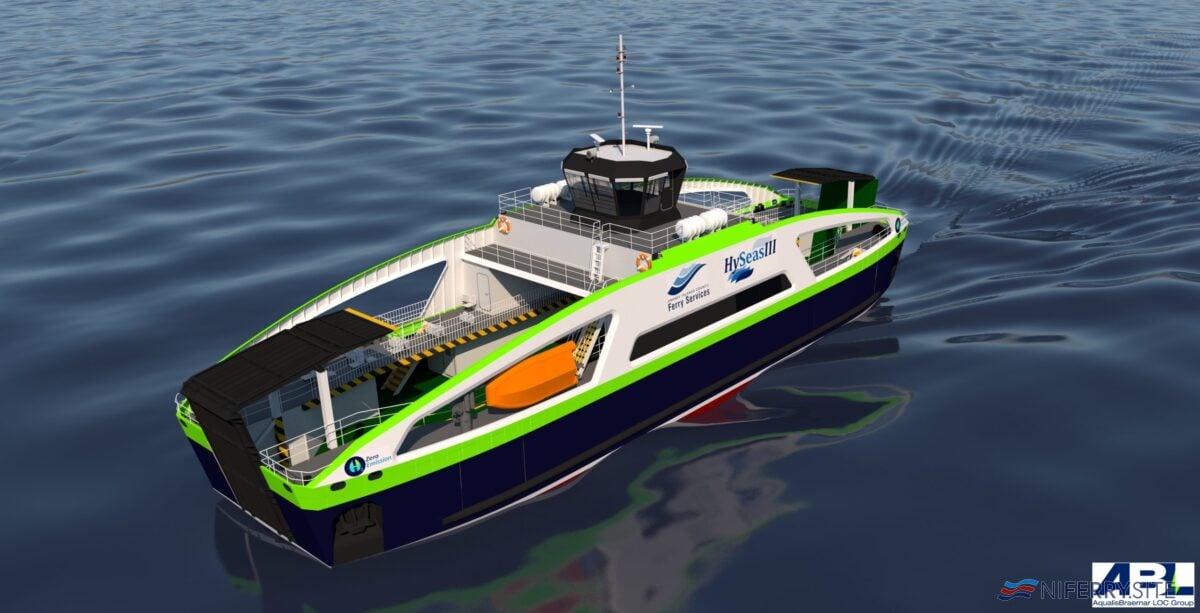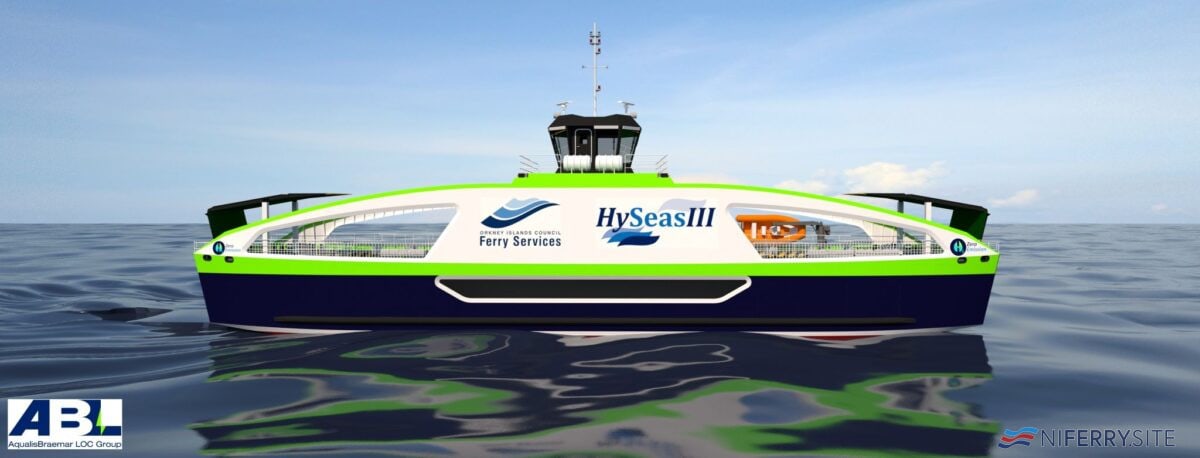The first renderings of the vessel being designed by the Scottish-led HYSEAS III project have been released.
The consortium aims to build Europe’s first sea-going ferry powered by hydrogen fuel cells. Hydrogen ferry designs to date have focussed on sheltered water routes.
The EU-funded HYSEAS III programme involves partners Caledonian Maritime Assets Ltd (CMAL), St. Andrew’s University, Orkney Islands Council and several European organisations.

The double-ended passenger and car ferry will have capacity for 120 passengers and 16 cars or two trucks.
Orkney Intentions
The designs, by AqualisBraemar LOC Group, will provide a blueprint to the further development of zero-emissions ferry travel.

The vessel has been designed to operate on the Orkney Ferries route between Kirkwall and Shapinsay in Orkney, where hydrogen fuel is generated through wind power. However, the ferry may be a design option for other Scottish routes, if and when hydrogen becomes more available as a fuel source.
CMAL currently has a major newbuilding project running for smaller vessels for the Calmac fleet. Such a vessel could influence later design choices.
Next Steps
The project will now seek feasibility approval in principle of the designs from the DNV Classification Society.
String testing is also currently underway in Bergen, Norway to demonstrate the complete fuel cell/battery/multidrive/propulsion.
The full size string test mirrors the load requirements of the new ferry on the Shapinsay to Kirkwall route, and will confirm power and fuel capacity requirements.

The results will provide valuable information, which will be fed back to the team to be incorporated into the design.
The design will be complete in March 2022. Following this, CMAL will seek funding partners to take the approved design to the procurement stage. Tendering and construction of the vessel will hopefully follow.
Nod to Calmac Loch Class
John Salton, Fleet Manager and Projects Director at CMAL said:
“We know that maritime transport remains the UK’s largest emitter of greenhouse gases, and our Hyseas III project will pave the way for the first seagoing vessel using purely renewable energy.
“Seeing the concept designs brings the project to life. The vessel design is broadly based on our larger loch class vessels, which are double-ended. Once the designs are approved, we will move to the next stage of the project, which will see the build of the engine to be used in feasibility studies.
“The maritime industry has a key role in the global fight for climate change, and this project marks a step toward emissions-free marine transport.”
CMAL Press Release 18 October 2021 https://www.cmassets.co.uk/first-renderings-completed-for-hydrogen-powered-ferry/
